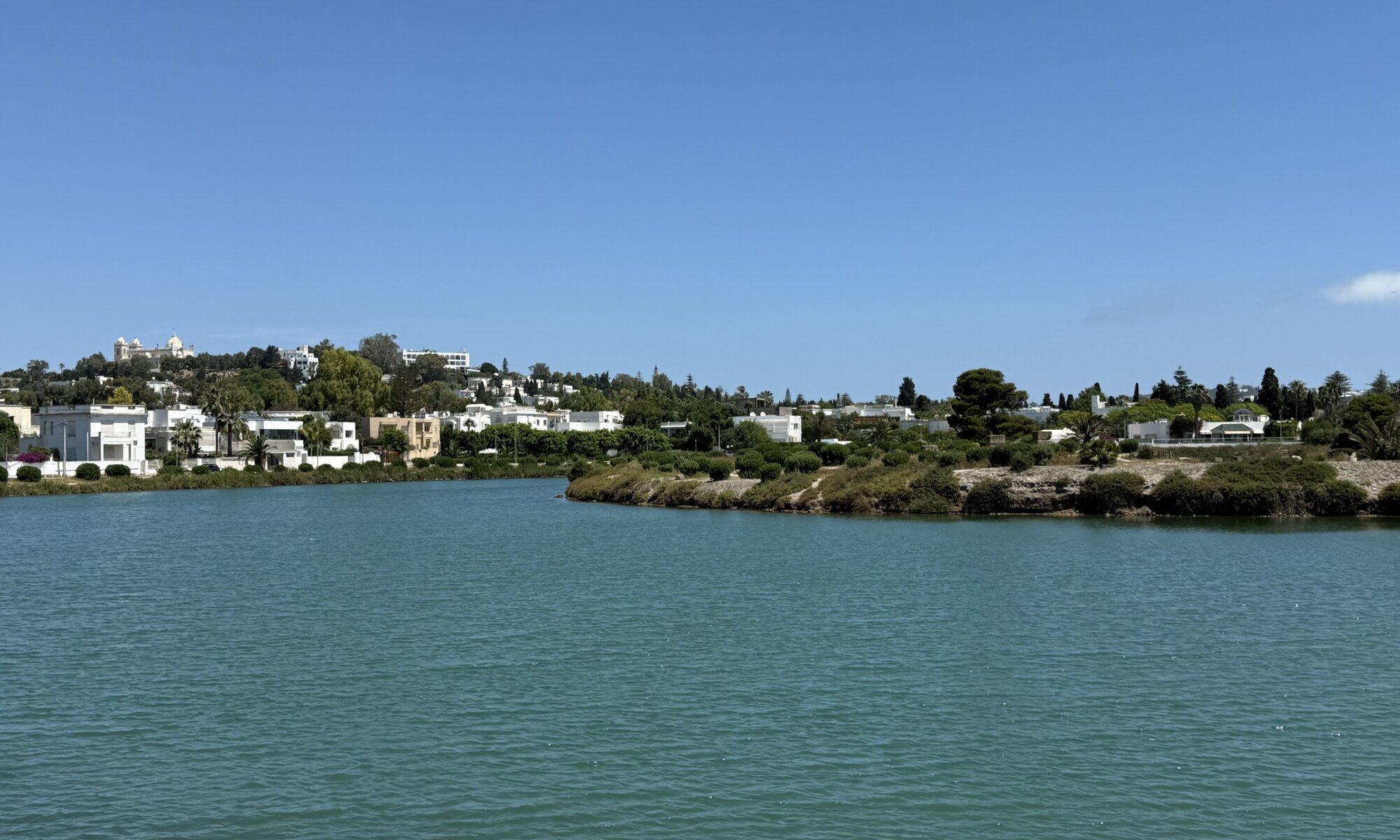Founded around 814 BCE by Phoenician settlers from Tyre, Carthage was a major ancient city located in present-day Tunisia near modern تونس. It grew rapidly into a powerful maritime empire controlling key Mediterranean trade routes. The city was strategically placed on a triangular peninsula with a natural harbour, protected by the Lac du Tunis, which made it a crucial hub for commerce and naval power. Carthage’s influence extended across North Africa, Sicily, and parts of Spain, until its destruction by Roma in 146 BCE after the Punic Wars.
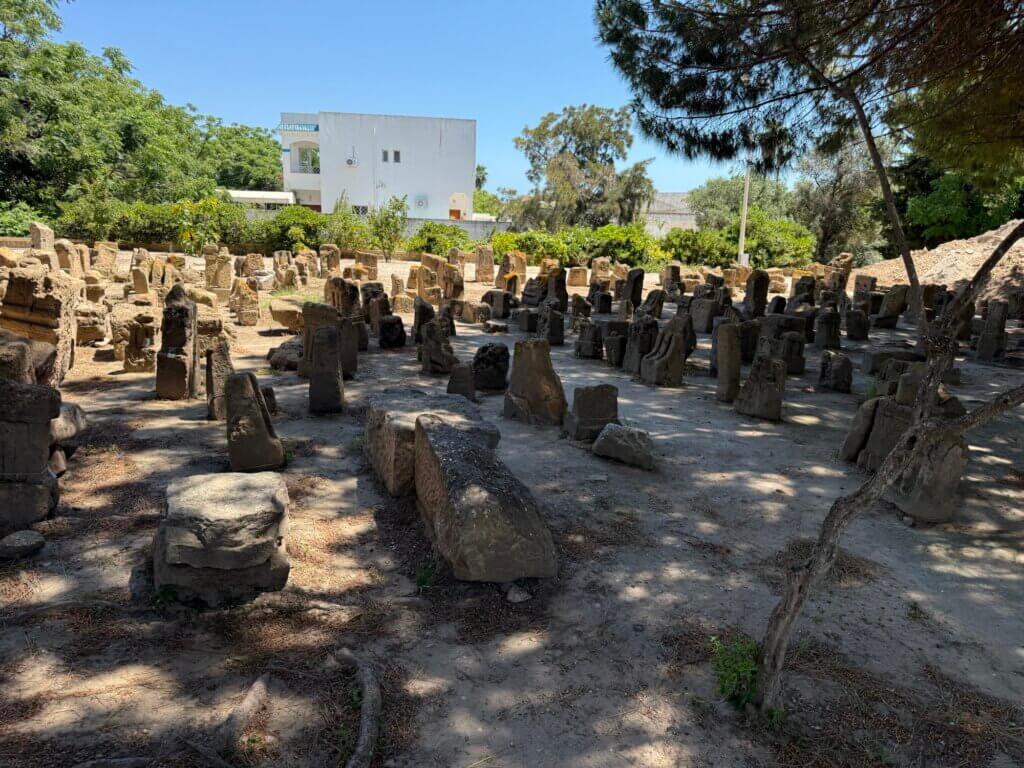
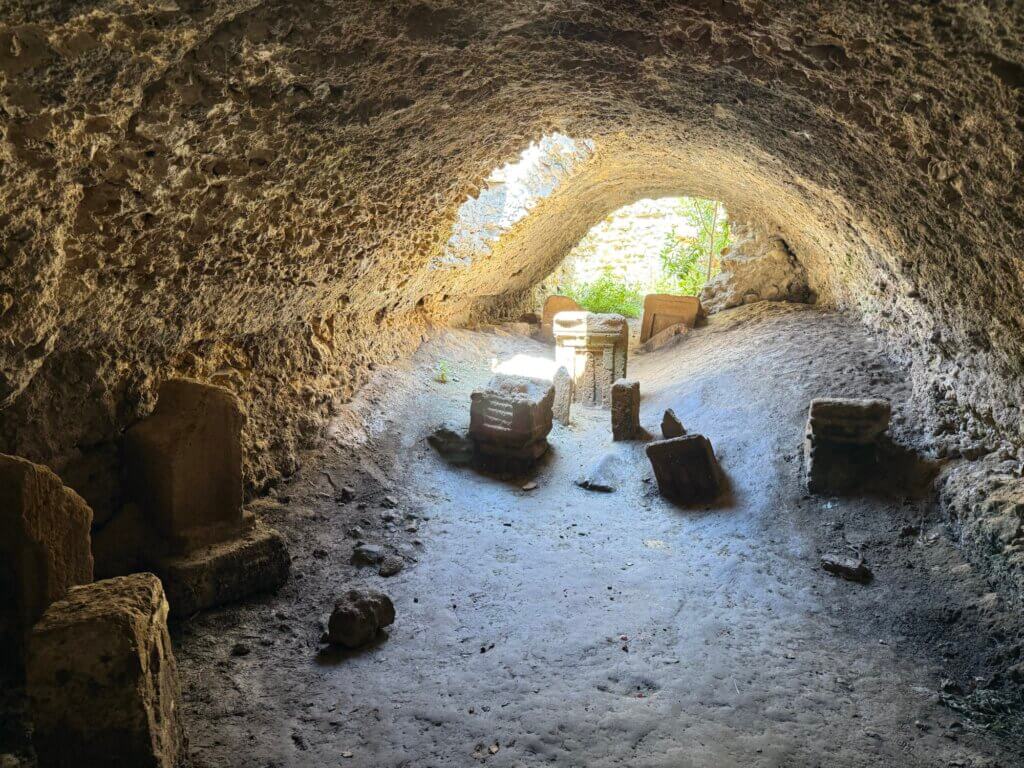
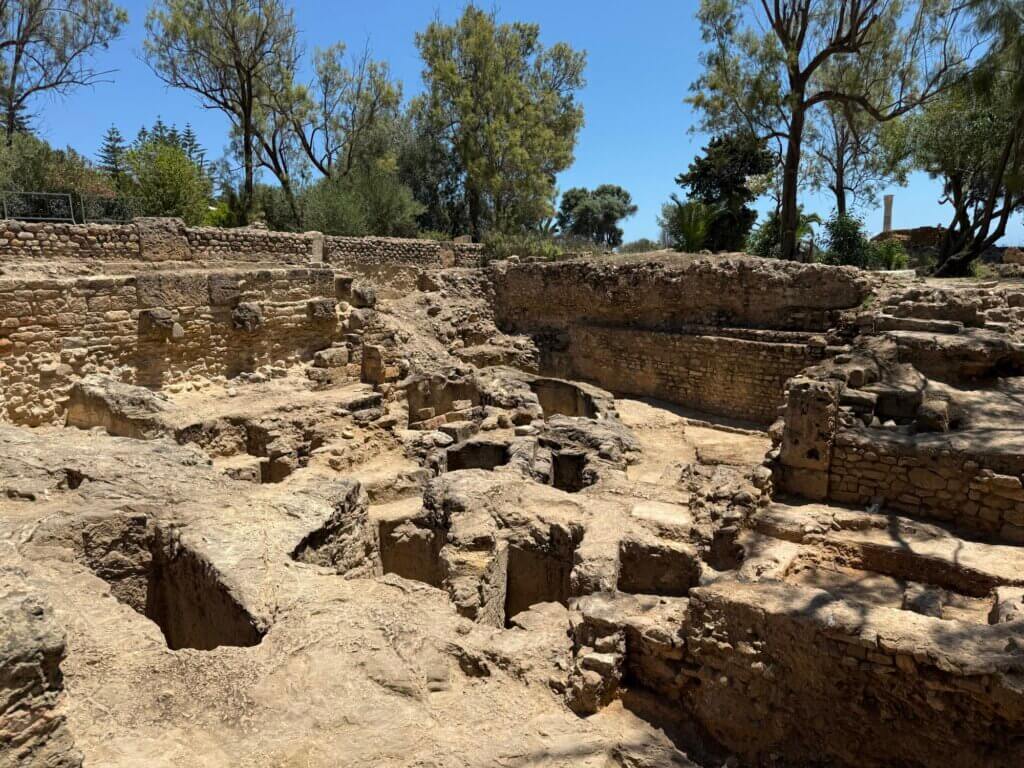
The phrase ‘Carthago delenda est‘, meaning ‘Carthage must be destroyed‘, originates from the Roman statesman Cato the Elder. He famously ended his speeches with this sentence to emphasize the perceived threat Carthage posed to Roma, ultimately leading to the Third Punic War and the city’s complete destruction. This phrase symbolizes Roma’s determination to eliminate Carthage as a rival power.
Today, the ruins of Carthage are an important archaeological site and a popular tourist destination. Visitors can explore remnants of the ancient city, including the extensive Roman remains built after Carthage was refounded by Roma. Among the most significant sites are the ancient harbour and the Roman Baths (Thermes of Antoninus). The harbour complex, once a bustling naval and commercial port, reveals the city’s maritime significance, while the thermes showcase the grandeur of Roman public architecture and social life. These days you cannot see the pools anymore, but walk through the underground service rooms; the stairs down to the sea didn’t survive either. A rebuilt column shows how big the thermes once were.
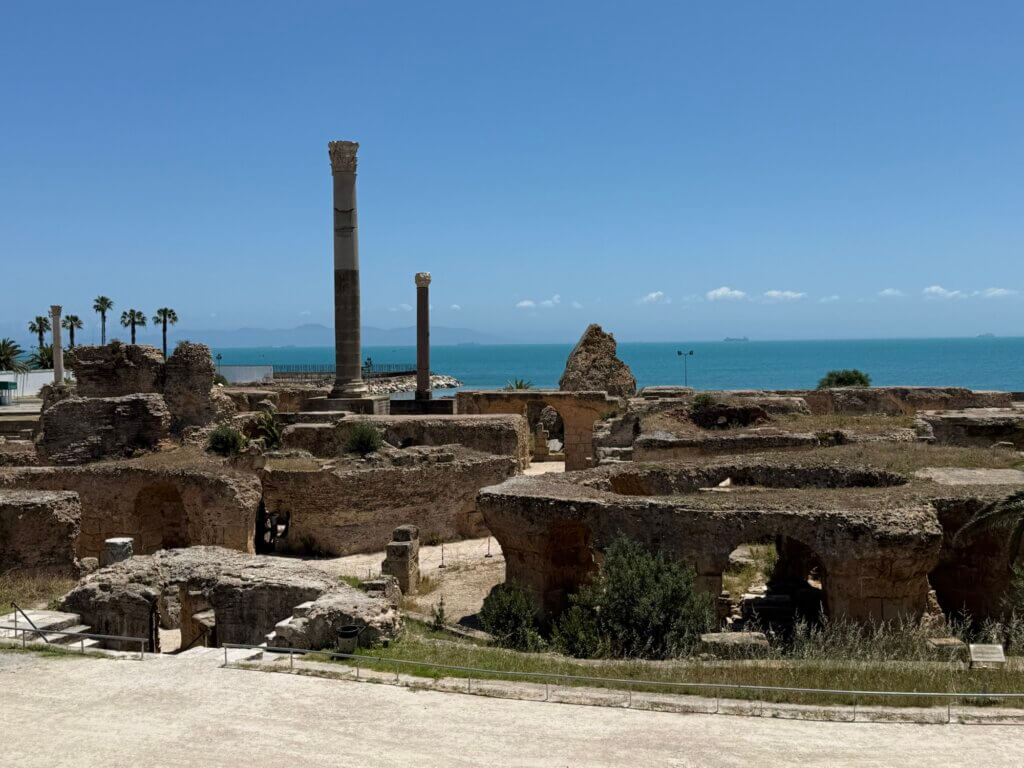

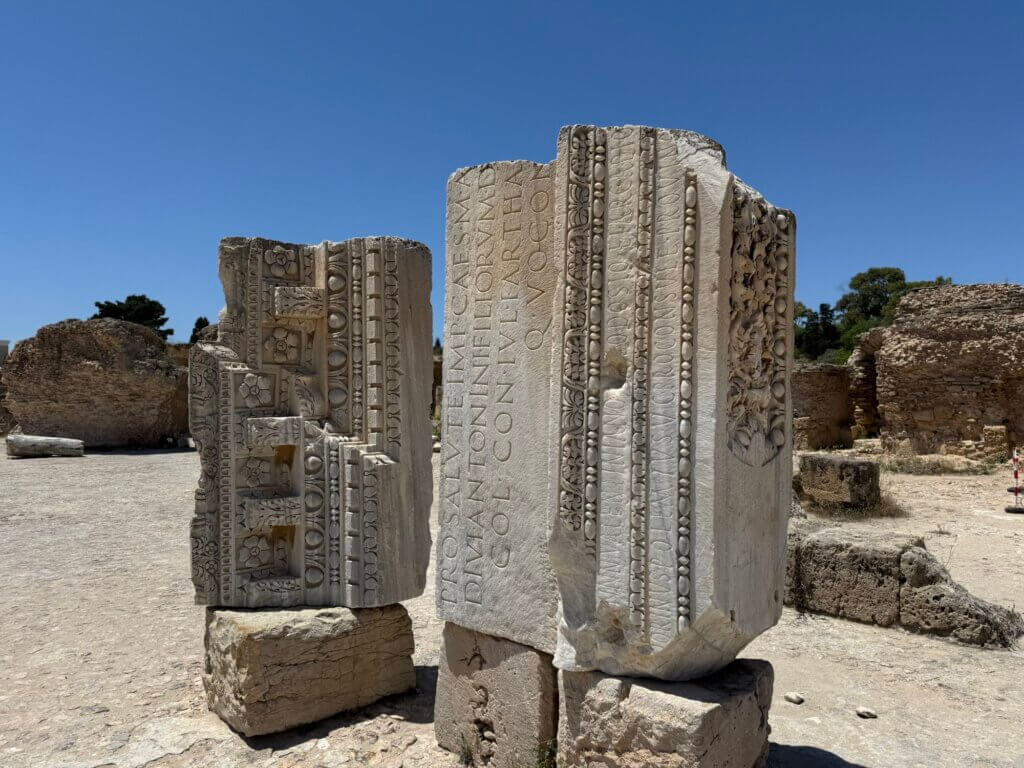
The ancient harbour of Carthage was one of the most sophisticated in the ancient world, featuring a circular military harbour and a rectangular commercial harbour, both protected by breakwaters. These harbours allowed Carthage to maintain a powerful navy and control Mediterranean trade routes. The round structures are still clearly visible, only the building with an endless number of columns is entirely lost. The Thermes of Antoninus, built in the 2nd century CE, are among the largest Roman baths outside Roma, with impressive ruins including large vaulted rooms, swimming pools, and intricate mosaics, reflecting the city’s wealth and Roman influence.
Access to the archaeological site of Carthage is convenient via the TGM (Tunis-Goulette-Marsa) light rail line from Tunis. This tram system connects the capital city to the coastal suburbs, making it easy for tourists to reach Carthage and explore its historical sites. The TGM stops near key points of interest, allowing visitors to experience the rich history of Carthage firsthand without the need for a car. Most important stop is Hannibal close to the thermes.
Carthage
قرطاج
Tunisia
Loading map...


